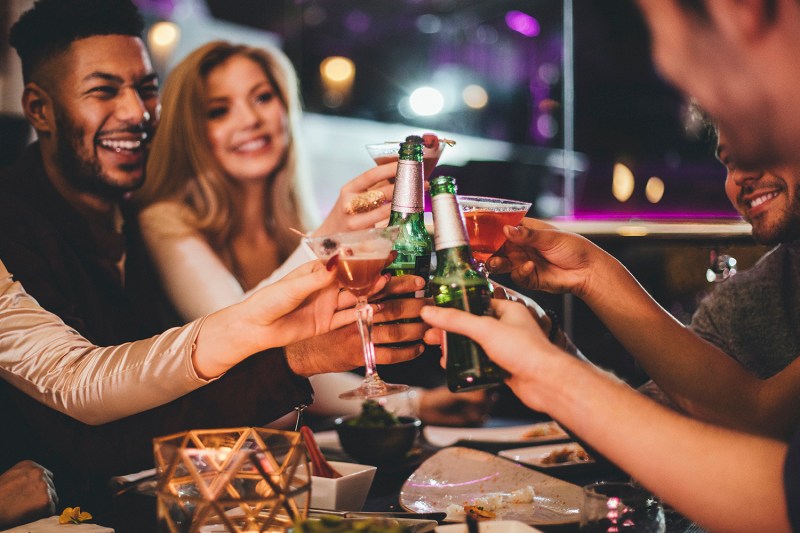Ah, the hangover. The deservedly maligned sickness that punishes you for enjoying the freeing spoils of alcohol. Everyone’s first lesson in alcohol consumption is the famous “Beer before liquor, never sicker; liquor before beer, you’re in the clear.” This old adage is definitely tried, but is it true?

While the origins of this phrase are lost to the sands of time and unreliable memories of professional imbibers, some people have conjured thoughts about why people invented and clung to it. Dr. Aaron White, senior scientific adviser at the National Institute of Alcohol Abuse and Alcoholism, spoke to MEL magazine about the potential reasoning behind the saying.
“It seems plausible that taking shots after drinking beer could irritate the stomach lining in some people, making them feel sick,” White said. “But another possibility is that some people are more likely to do shots once they’re already intoxicated on beer.”
Another popular theory reverses the saying.
Another popular theory reverses the saying. Since beer is served in large quantities and often takes a while to drink, starting off with a lager could slow down your overall drinking. If you stick to the original phrase, this logic could be applied to slowing yourself down after a night of drinking shots or small cocktails very quickly.
Whatever the individual reasoning, experts seem to agree that how much you drink has the greatest effect on how you feel later rather than any particular order. The standard drink — 12 ounces of beer, 5 ounces of wine, or a 1.5-ounce shot — takes about an hour to get processed into your system. The rate at which your liver does this is based on many factors you can and can’t control, from your sex to what you’ve had to eat.

The only thing science can tell you for certain about gaming your drink choices come downs to the color.
“Color is pretty well correlated with the congener content of alcoholic drinks,” Kamal Patel, nutritional researcher and director of Examine.com, told Vice.
The only thing science can tell you for certain about gaming your drink choices come downs to the color.
Spirits like dark rums and bourbons tend to have higher levels of congeners, toxic byproducts of the fermentation process. Congeners can include small amounts of methanol (what is said to be responsible for the blindness people experience when they drink made-in-the-mountains moonshine), but can also include alcohols such as acetone, esters, tannins, and more. While byproducts, congeners are also responsible for much of the aroma and taste in alcohol.
Think about it: Vodka is distilled and stripped of all colors, flavors, and aromas. All of the congeners are removed, thus no, well, anything. Bourbon, on the other hand, keeps some of the congeners, which gives them some flavors and aromas when coming off the still (the color and the majority of the flavor in bourbon still comes from the wood, of course).
The long and short of it? Cool it with whatever delicious poison you choose and you’ll be just fine come morning. If you do find yourself in the undesired position of hungover, check out these ways to help cure it.


